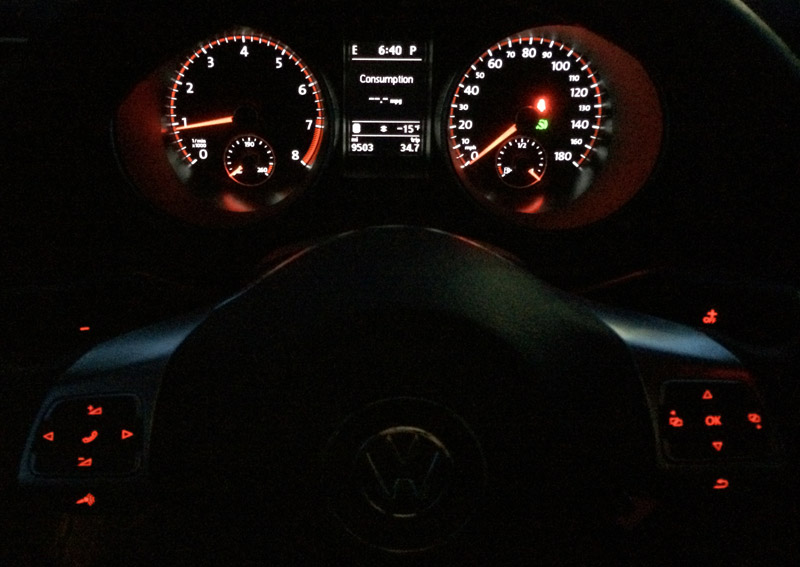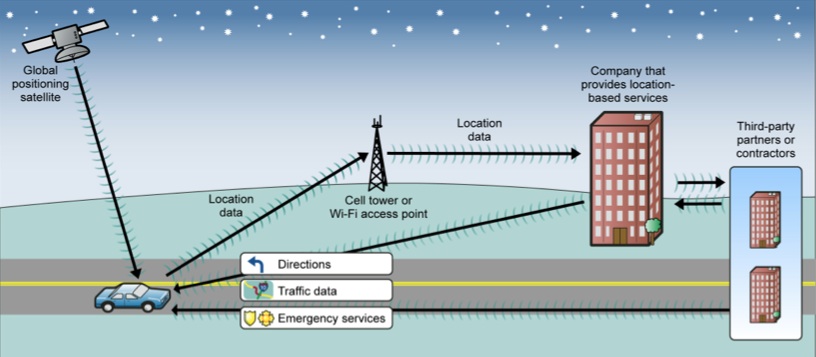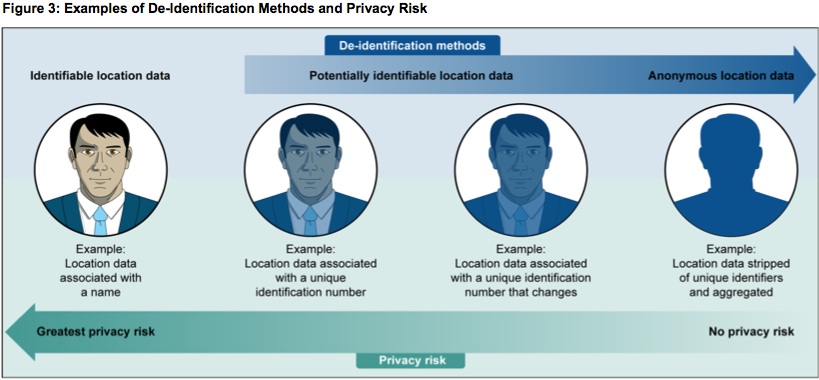3D printers hold the promise for low-cost, environmentally friendly, on-demand production, which are key priorities in auto manufacturing. The incredible devices make products by following instructions from a computer and stacking raw material – polymers, mainly – into layers. Whereas in the conventional design and manufacturing process CAD models are developed and then adapted to machining, 3D printers have the amazing capability to interpret a digital design file directly from CAD and create – literally grow – a finished product from plastic, metal, or other type of material.

-15F (-26C) in Madison early this morning.
Danny King:
The Polar Vortex has created a bit of a mathematical optical illusion when comparing the effect of cold weather on gas-powered cars and electric vehicles. Cold weather reduces EV range by a greater percentage than it reduces gasoline fuel economy, but because EVs cost so much less to “fuel,” the savings for EV drivers actually increase as the temperature drops. Got all that? Here’s the math.
According to FleetCarma, an EV’s single-charge range at freezing (32 degrees Fahrenheit) drops 20 percent compared to what it is at 73 degrees, while the fuel economy of a gas engine declines just 12 percent. Drop the temperature to 0 degrees Fahrenheit, and the difference is more pronounced, as EV range falls 29 percent while fuel economy decreases 19 percent. Heat up that cabin, and single-charge range drops further, by as much as 43 percent.
So that means some frost makes EV savings disappear, correct? No. Because of the disparity in fueling costs to begin with, EV payback rate speeds up as the temperature drops. Specifically, EV drivers save on average 12 cents a mile in fueling costs compared to conventional vehicles at 73 degrees, and 15 cents a mile when the temperature falls to 0 degrees Fahrenheit. So plug in, bundle up and check out FleetCarma’s graphics on the subject below.
via Steve Crandall.
“Police officers currently have to enter license plate numbers manually into their system to see if there is anything they should be aware of about the car or its driver. This new device will scan all of the license plates in the immediate area and instantly alert them if there is reason to stop a certain vehicle,” explains senior officer Timo Vihervaara.
“The idea is to use a normal video camera to capture an image. When the image shows a license plate, the computer identifies it, compares it with the police register, and informs the officers if the car has missed its yearly inspection, if vehicle taxes haven’t been paid or if it has possibly been stolen.”
Insurance companies to the rescue
Young, educated and upwardly mobile, Kristin Winn represents the ideal target for automakers trying to reach young buyers. Ms. Winn, a 24-year-old technician for an ophthalmologist, says she plans to replace her nine-year-old Chevrolet Cobalt this year.
She says that she would like to buy a new car that has the latest technologies, like hands-free calling, but that it’s not likely to happen considering the cost.
“I’ll probably buy used,” said Ms. Winn, who is from Ann Arbor, Mich., as she admired the Mercedes and Cadillac exhibits at the North American International Auto Show last week. “I plan to go back to school, so I have to keep that in mind.”
Mr. Gou also said his company, which is already expanding into medical, automotive and environmentally friendly products, is planning “big projects” with BMW AG and Audi AG, but declined to elaborate.
He said the company’s unit already makes displays for U.S. electric car maker Tesla Motor Inc.
Hon Hai, which employs more than a million workers in China, has been facing the challenge of rising labor costs and workplace disputes in the country.
To diversify its manufacturing base, the company plans to make Indonesia a key production site in the coming years, said Mr. Gou.
Lexus will host an exhibition of world-class design at this year’s Milan Design Week, bringing together works by three world-renowned designers and the 12 winning entries from the second annual Lexus Design Award for young, international creative talent.
Lexus Design Amazing will demonstrate the brand’s enthusiasm for and support of futuristic design, beyond the automotive world. For the first time, it will be working with three internationally celebrated designers: Fabio Novembre, Nao Tamura and Hiroshi Ishii, leading the Tangible Media Group design team from the MIT Media Lab.
Each contributor will be creating a work specially developed for the show, inspired by Lexus’s global brand concept campaign Amazing in Motion. The exhibition will be open to the public at the Circolo Filologico in Milan from 8 to 13 April as part of the world’s largest design event, the Salone del Mobile di Milano.
Kettering – now probably best known as the second name in the Memorial Sloan-Kettering Cancer Center – invented the electric starter for the automobile (and led the development of the two-stroke diesel engine, the first aerial missile, and the first colored paint for mass produced cars, to name a few more.)
Consider that before Kettering:
Cars had to be started with that huge crank.
Cars had multiple starting controls, like “choke” and “coil,” that you had to adjust to get the car to start.
And these controls were not only complex, but important – if you forgot to set the Coil on Retard before starting, the crank could kick, whip around and seriously injure, even kill, the person trying to start the car.
Women didn’t drive cars by themselves very much, since they were thought as not being strong enough to start one.
Salaya, an hour by train from Bangkok, is a leafy rural town far from the political unrest gripping the Thai capital. Its small train station is surrounded by fields, dotted with the occasional dwelling. The largest building in town serves as a university campus and training hotel.
Thirty minutes away by taxi from Salaya, amid farmland and the odd coconut tree, two old steam locomotives stand by the side of the road, the first indication that you are approaching a unique tourist attraction.
The road then passes a hangar sheltering vintage coaches and double-decker buses. Military planes, helicopters and a fire engine are parked on the tarmac in front. The next 30 metres should be taken slowly because it’s easy to miss the entrance to the Jesada Technik Museum – if you happen to overlook the small green single-propeller plane parked outside, that is.
Inside the gateway, a restored penny-farthing and a hobby horse – types of bicycle that date back to the 19th century – share a small court-yard with a 1920s coal-powered Ford Model A and a brightly coloured Philippine Jeepney.
For a country which prides itself on having given the world the Mercedes and the Autobahn, it represents a major ideological U-turn: Hamburg, Germany’s second largest city, is planning to ban all cars from its centre over the next 20 years and put thousands of commuters on bikes.
Under an audacious urban development scheme named “Green Network”, all vehicles will be verboten in Hamburg’s city centre by 2034. Instead people will move about the port city, either via public transport or on foot or bicycle along a series of idyllic green thoroughfares which are now being painstakingly created.
“We envision a network that doesn’t just help residents to get from point A to B in a sustainable fashion,” Hamburg city spokeswoman Angelika Fritsch told the ZME Science urban planning network.
“It will offer people opportunities to hike, swim, do water sports, enjoy picnics, restaurants, experience calms and watch nature right in the city.”
Who is Generation Y and does this new group of consumers really matter to OEMs? Are they a unique customer segment that requires different market focus and investment, or will they ultimately acquire the behaviors and buying patterns of previous generations?
For car shoppers under the age of 31, the biggest factor in deciding what to buy isn’t performance, fuel economy or comfort, it’s the shopping experience and “cockpit technology,” according to a recent study.
Cockpit technology includes things like Bluetooth phone interfaces, attachments for MP3 players and voice-to-text technologies that can allow people to interact with text messages or emails while driving.
There seems to be an intrinsic conflict between safety and drivers’ desires to stay connected while driving.
Car companies will have to deal carefully with that issue, according to researchers at Carnegie Mellon’s Tepper School of Business, one of four graduate schools that participated in the Deloitte study.
“Regulation keeps trying to say texting is distracting to driving, but for the consumer it is really the driving that is distracting to texting.” the researchers said.
Sales of risky pools of securities backed by car loans are accelerating at the start of 2014 as investors snatch up the higher-yielding bonds that were popular in the build-up to the financial crisis.
This week alone, about $2bn in deals that bundle car loans made to subprime borrowers have hit the US debt capital markets, following a 20 per cent jump last year to $21.5bn. Demand for the securities is forecast to increase further in 2014, helping push sales to the $25bn mark, according to Deutsche Bank estimates.
The rise in deals backed by subprime auto loans comes as benchmark interest rates remain near historic lows. In addition, expectations for an increase in economic activity and higher consumer spending in the coming months has encouraged a growing number of investors to buy assets tied to lower credit loans.
“Until recently, bond deals with the word ‘subprime’ attached to them were seen as radioactive: Almost no one wanted to get near them,” said Adrian Miller, director for fixed-income research at GMP Securities.
Ann Arbor —When Jose Ortiz of Ypsilanti bought his 2010 Matrix at Dunning Toyota here in December, Toyota Motor Corp. became the first automaker to sell 4 million certified used vehicles, marking a major milestone in the program it pioneered back in 1996.
On Wednesday, Toyota executives honored Ortiz and refunded his purchase as they celebrated what has become an enormously important — and profitable — sales channel for the company.
“It’s almost a business in itself,” said Yoshimi Inaba, executive chairman of Toyota Motor Sales USA Inc. In fact, he told The Detroit News that if Toyota Certified Pre-Owned vehicles were a separate brand, it would have outsold 27 other nameplates in 2013, booking almost 370,000 sales in the United States last year.
That was more than either Mercedes or BMW sold new.
Related: Asymcar 9 on used car valuations
Sebastian Thrun is the godfather of the autonomous car. His work for Google X — the skunkworks program that also created Glass — was the catalyst for the search giant’s push to produce a fleet of self-driving vehicles that have racked up hundreds of thousands of miles on public roads. Thrun believes that autonomous vehicles aren’t just the future of personal transportation, but the Holy Grail for road safety. By removing the most unpredictable element from the equation — the driver — commutes would be quicker, infrastructure would be maximized, and, ultimately, it could save tens of thousands of lives.
Ford Motor, which pioneered the affordable mass-produced motor car, is looking to play a bigger role in building public transport vehicles or integrating cities’ transport systems as it grapples with the growing challenge of helping people move around the world’s traffic-choked cities.
Alan Mulally, Ford’s chief executive, said questions of “personal mobility” and “quality of life” were some of the “most important and exciting developments” around the world and simply providing more and more cars was “not going to work”.
Mr Mulally’s comments at a Detroit auto show event offer a rare insight into a senior auto executive’s thinking about the wider transport challenges facing the industry. Younger people in many industrialised countries are putting off learning to drive and buying vehicles, while in the developing world fast-growing car ownership has clogged many cities.
Ford has long been the car company most open to thinking broadly about mobility issues. Henry Ford, its founder, sought to open up the world’s highways “to all mankind” by making his vehicles ever cheaper. Bill Ford, his great-grandson and the company’s current executive chairman, also has a history of interest in environmental issues that has shaped the company’s approach.
Fascinating. Ford’s late 1990’s CEO Jacques Nasser attempted to address a number of personal transport “jobs to be done”. Perhaps too early.
The global car industry is spending more on research and development than ever before as manufacturers try to stay ahead of a rapidly shifting market and fierce competition from the technology industry.
Investment in new technologies to make cars more efficient, more interactive, run on new fuels and even begin to drive themselves is growing faster than sales and revenue, amid a period of technological disruption not seen in the industry since the birth of the internal combustion engine.
Research and development spending by the car industry has grown at an annual rate of 8 per cent over the past four years, eight times the rate of increase seen between 2001 and 2012, according to research by the Boston Consulting Group.
The news comes on the eve of the Detroit motor show, the industry’s first product showcase of the year, and traditionally the stage where the world’s biggest carmakers show off their most advanced new models.
The R&D push will be visible in launches of new vehicles such as Ford’s next-generation F-150 pick-up truck, which the carmaker says is its most advanced product on the market.
As the world’s car industry leaders head to the gargantuan Detroit annual motor show this week, many of them will be in the most upbeat mood for years. Sales are back, the car companies are all making profits. But having weathered the worst recession in living memory a big black cloud still hangs above – young people aren’t buying.
Car and youth culture synched gears decisively in 1955. That was when James Dean played chicken in a black Ford Super De Luxe in Rebel Without a Cause. But more recently the love affair between youth and wheels seems to have broken.
New car purchases by those aged 18-34 dropped by 30% in the US between 2007 and 2012, according to the car shopping website Edmunds.com. Many American under-35s are now not even getting their licence. Given that so called “millennials” – those born between 1983 and 2000 – are now the largest generation in the US, the trend is worrying car firms.
Meanwhile the number of miles driven by Americans each year has also started to drop –they now drive fewer miles per capita than at the end of Bill Clinton’s first term, according to a report released last year by US PIRG Education Fund. And the age group showing the biggest decline? Those aged 16 to 34, who drove 23% fewer miles on average in 2009 than in 2001.
There are now over one billion cars traveling roads around the world directly and indirectly costing trillions of dollars in material resources, time and noxious emissions. Imagine all these cars running cleanly for 100 years on just 8 grams of fuel each.
Laser Power Systems (LPS) from Connecticut, USA, is developing a new method of automotive propulsion with one of the most dense materials known in nature: thorium. Because thorium is so dense it has the potential to produce tremendous amounts of heat. The company has been experimenting with small bits of thorium, creating a laser that heats water, produces steam and powers a mini turbine.
Current models of the engine weigh 500 pounds, easily fitting into the engine area of a conventionally-designed vehicle. According to CEO Charles Stevens, just one gram of the substance yields more energy than 7,396 gallons (28,000 L) of gasoline and 8 grams would power the typical car for a century.
At a welcoming banquet in Japan in the 1980s, Ford Motor chairman Philip Caldwell received a memorably double-edged compliment. “There is no secret about how we learned to do what we do, Mr. Caldwell,” said the head of Toyota Motor, Eiji Toyoda. “We learned it at the Rouge.”
Toyoda was referring to Ford’s fabled River Rouge production complex in Dearborn, Michigan. In the early days of Japan’s rise, Ford and other American auto companies had been famously helpful to information-gathering Japanese engineers. Know-how gleaned at the Rouge evidently proved particularly valuable.
Similar stories can be told about the complacency of other U.S. industries in the face of emerging Japanese competition. Where Japanese industrial “targeting” is concerned, America never seems to learn.
Hands free: The Audi Sport Quattro Laserlight concept car features compact sensor and computing technology that lets the car pilot itself.
Carmaker Audi showed off a book-sized circuit board capable of driving a car on Monday at the International Consumer Electronics Show (CES). Audi claims the computer, called zFAS, represents a significant advance in automation technology because it is compact enough to fit into existing vehicles without compromising design.
Several different Audi vehicles equipped with zFAS drove themselves onto the stage during the presentation, and a new concept car designed to showcase it was also introduced.
The car, called the Audi Sport Quattro Laserlight, is capable of what Ulrich calls “piloted driving” but betrays no outward sign of being different from a conventional vehicle.


United States Government Accountability Office (PDF):
Representatives from all 10 selected companies–auto manufacturers, portable navigation device (PND) companies, and developers of map and navigation applications for mobile devices–said they collect location data to provide consumers with location-based services. For example, companies collect location data to provide turn-by-turn directions. Nine companies share location data with third-party companies, such as traffic information providers, to provide services to consumers. Representatives from two companies said they share data where personally identifiable information has been removed (de-identified data) for purposes beyond providing services (e.g., for research), although such purposes are not always disclosed to consumers. All company representatives said that they do not share personally identifiable location data with or sell such data to marketing companies or data brokers.
All 10 selected companies have taken steps consistent with some, but not all, industry-recommended privacy practices. In addition, the companies’ privacy practices were, in certain instances, unclear, which could make it difficult for consumers to understand the privacy risks that may exist.
Disclosures : Consistent with recommended practices, all selected companies disclose that they collect and share location data. However, inconsistent with recommended practices, nine companies’ disclosures provide reasons for collecting data that are broadly worded (e.g., the stated reasons for collecting location data were not exhaustive), and five companies’ disclosures do not describe the purposes for sharing de-identified location data. Without clear disclosures, risks increase that data may be collected or shared for purposes that the consumer is not expecting or might not have agreed to.
Consent and controls: Consistent with recommended practices, all selected companies obtain consumer consent to collect location data and obtain this consent in various ways. In addition, all companies offered consumers some controls over location data collection. However, if companies retained data, they did not allow consumers to request that their data be deleted, which is a recommended practice. Without the ability to delete data, consumers are unable to prevent the use or retention of their data, should they wish to do so.
Safeguards and retention: All selected companies take steps to safeguard location data–a recommended practice–but use different de-identification methods that affect the extent to which consumers may be re-identified and exposed to privacy risks. Also, there is wide variation in how long companies retain vehicle-specific or personally identifiable location data. To the extent that a company’s de-identification methods allow a consumer to be identified or that identifiable data are retained, risks increase that location data may be used in ways consumers did not intend or may be vulnerable to unauthorized access.
Accountability: All selected companies disclose to consumers or take steps to protect location data that they share with third parties; such efforts are consistent with recommended practices. However, inconsistent with recommended practices, none of the selected companies disclose to consumers how they hold themselves and their employees accountable. The companies told GAO that internal company policies serve this function.
Ford’s Global VP/Marketing and Sales, Jim Farley, said something both sinister and obvious during a panel discussion about data privacy today at CES, the big electronics trade show in Las Vegas.
Because of the GPS units installed in Ford vehicles, Ford knows when its drivers are speeding, and where they are while they’re doing it.
Farley was trying to describe how much data Ford has on its customers, and illustrate the fact that the company uses very little of it in order to avoid raising privacy concerns: “We know everyone who breaks the law, we know when you’re doing it. We have GPS in your car, so we know what you’re doing. By the way, we don’t supply that data to anyone,” he told attendees.
Leading security provider ADT® today announces its Pulse app will be compatible with the Ford SYNC® in-car connectivity system. Using the SYNC AppLink™ interface, drivers will be able to arm and disarm their security system, make sure doors and windows are closed, and take other steps to ensure the security of their property using simple voice commands.
“ADT is constantly seeking ways to enhance both security and convenience for our customers in an increasingly mobile world,” said Arthur Orduna, senior vice president and chief innovation officer of ADT. “By working together with Ford, ADT is able to provide a safe way for drivers to quickly address their security concerns while on the road.”
That strategy starts with three platforms: MQB for small cars, MLB for midsize models and MSB for sporty and premium products (there’s also the NSF for cars like the E-up). Speaking to AutoblogGreen, Krebs said VW has designed modules, things like engines and electric components (think: AC compressor, on-board chargers and battery management systems), to be used across all three platforms and across all brands all. “We try, with a minimum of those components, to produce a maximum number of variants of cars,” he said. “This is only possible if, at an early stage of the design of new vehicles, we implement the idea that these cars are not only designed for gasoline and diesel powertrains but that we can also include CNG concepts, flex-fuel concepts, pure electric vehicles or plug-in hybrid vehicles. With minor changes in the body in white, we can produce those vehicles, bumper-to-bumper, in one factory.”
A government report finds that major automakers are keeping information about where drivers have been — collected from onboard navigation systems — for varying lengths of time. Owners of those cars can’t demand that the information be destroyed. And, says the U.S. senator requesting the investigation, that raises questions about driver privacy.
The Government Accountability Office in a report released Monday found major automakers have differing policies about how much data they collect and how long they keep it.
Automakers collect location data in order to provide drivers with real-time traffic information, to help find the nearest gas station or restaurant, and to provide emergency roadside assistance and stolen vehicle tracking. But, the report found, “If companies retained data, they did not allow consumers to request that their data be deleted, which is a recommended practice.”
The report reviewed practices of Detroit’s Big Three automakers, Toyota Motor Corp., Honda Motor Co. and Nissan Motor Co. It also looked at navigation system makers Garmin and TomTom and app developers Google Maps and Telenav. The report, which didn’t identify the specific policies of individual companies, found automakers had taken steps to protect privacy and were not selling personal data of owners, but said drivers are not aware of all risks.
The agency said privacy advocates worry location data could be used to market to individuals and to “track where consumers are, which can in turn be used to steal their identity, stalk them or monitor them without their knowledge. In addition, location data can be used to infer other sensitive information about individuals such as their religious affiliation or political activities.”
Auto makers aim to make 2014 the year that cars connect to the Web in a big way, and they are stepping up their land rush with Silicon Valley to compete for customers who go online on the road.
General Motors Co. GM -0.50% and Audi AG NSU.XE -0.15% said they plan to use this week’s International Consumer Electronics Show here to roll out strategies for equipping cars with built-in 4G high-speed broadband—the mobile technology now common on smartphones and tablets.
Auto makers are flexing their muscle with high-end applications and cool features at the Consumer Electronics Show in Las Vegas, suggesting they’re ready to compete with Silicon Valley for the customers who go online on the road. Joe White reports. Photo: Audi.
The car makers said these data pipelines will let them provide a variety of services, ranging from streaming video to remote troubleshooting of auto systems. GM, for example, plans to offer a Weather Channel app that drivers can see on in-dash screens, GM executives said.
Ford Motor Co. F +1.35% said last week it will add 3.4 million vehicles to the one million that already use its Ford Sync AppLink product, which lets drivers and passengers control smartphone apps using voice commands through onboard software and systems.
First, Tesla’s Model S sedan downloads firmware updates on a regular basis. These software changes go much further than simply changing user interface elements on the dashboard. Instead, they may modify major elements of the car from its suspension to its acceleration and handling characteristics.
Secondly, in a break from traditional automobile practices, rather than waiting a year to roll out annual improvements to its Model S, Tesla has been continuously improving its product each quarter on the assembly line. There are no model years to differentiate a Tesla Model S built in 2012 from one built this year. (The last time this happened in auto manufacturing was the Ford Model T.)
BMW makes the Ultimate Driving Machine, and now it’s made the Ultimate Drifting Machine. Except it’s the code that’s in control.
At CES, BMW is showing off a modified 2-Series Coupe and 6-Series Gran Coupe that can race around a track at the limits of adhesion, and slide around corners like a throttle-happy Formula Drift ace.
Both cars are outfitted with a LIDAR system, 360-degree radar, ultrasonic sensors, and cameras that track the environment. Partnered with the electronic braking, throttle, and steering control that’s standard on all new BMWs, the prototypes can run through a high-speed slalom, perform precise lane changes, and slide around corners, without any driver intervention.
This is just the latest iteration of BMW’s autonomous driving tech, which began with its Track Trainer project that used GPS, waypoint markers, and uploaded track maps to run around Laguna Seca and the Nürburgring nearly as fast as a professional hot shoe.
Via Paul Brody.
From the FAQ:
What is the Open Automotive Alliance™?The Open Automotive Alliance is a group of technology and automotive companies who have come together to bring the best of Android into the automobile in a safe and seamless way.
Who is in the Open Automotive Alliance?
The founding members of the Open Automotive Alliance are Audi, General Motors, Google, Honda, Hyundai and Nvidia. Though this announcement is the beginning, not the end. We’ll enthusiastically work with any company interested in the compatible use of the Android with cars.
Why is this beneficial to automakers?
Automakers will be able to leverage a platform already being used by millions to deliver a familiar and consistent experience to their customers. Taking a platform centric approach enables high quality application development in a way that is purpose built for cars.
Why is this beneficial to drivers?
Drivers are already trying to access mobile services while they’re on the road, but in ways that aren’t always seamless or safe. By working with automakers to deliver these experiences in ways that make sense for the automobile, drivers can get what they’re looking for without disrupting their focus on the road.
Why is this beneficial for developers?
With one platform that developers are already familiar with to target (rather than a patchwork of platforms from different automakers), developers will be able to focus on delivering a powerful experience for users.
Who can join the Open Automotive Alliance?
We welcome those in the automotive and technology space who are committed to bringing the best of mobile into the automobile in safe and seamless ways.
How will Android work inside of the automobile?
We’re working with our partners to enable better integration between cars and Android devices in order to create a safer, car optimized experience. We’re also developing new Android platform features that will enable the car itself to become a connected Android device. Stay tuned for more details coming soon.
Windows Embedded Automotive 7 is an extensible technology platform for automakers and suppliers to deliver in-car experiences that keep drivers connected and informed. Leveraging a range of devices, services and technology, the platform extends work and home into the vehicle through connected car scenarios. Delivering the power of Windows to the car, Windows Embedded Automotive 7 provides resources that help automobile manufacturers increase customer loyalty and provide new services, such as enabling software updates that extend a vehicle’s value and lifespan. With more than ten years in the automotive space, and deep, longstanding relationships with automakers including Ford, Fiat, Nissan, and Kia, Microsoft is invested in helping car manufacturers and suppliers connect drivers with a range of devices and services.
Will buying a car soon involve questioning whether it is compatible with your smartphone? Google has announced a new “Open Automotive Alliance” (OAA), teaming up with carmakers Audi, General Motors, Honda, Hyundai and the graphics chipset company Nvidia to “enable new forms of integration” – but will find Apple and Microsoft already wooing many carmakers with their own software.
Nor do carmakers seem prepared to throw their lot in with one or the other platform. Audi, General Motors and Hyundai have previously announced tieups with Apple, while Ford counts both Microsoft and Apple among its collaborators. (A table showing which company is with which initiative is at the end: only Hyundai belongs to all the projects currently underway.)
Announcing the project in a blogpost, Google’s director of Android engineering, Patrick Brady, says that “there’s still an important device that isn’t yet connected as seamlessly to the other screens in our lives – the car”.

Sydney. Vienna. Paris. Santa Cruz. Twin Valley. Charlotte. Johannesburg. San Diego. New York. Home to just a few of the fellow travelers I met while driving through the Yucatan Peninsula recently. Travel is a blessing to be savored.
But it was the Pemex gas station attendant whose friendly Spanish and English words remained with me as I queued with paperwork to return my rental car.
Pemex, Mexico’s national oil company, will soon lose its monopoly status likely changing their auto service culture.

I pondered this while visiting several Pemex facilities over the past few weeks. Not that I had an opportunity to choose other brands, much less price shop petrol. I noticed just one non-Pemex station during our 1360km journey.
I often saw full service attendants standing next to fuel pumps when arriving at a Pemex station. In one case, a bit of competition broke out as our non-swift Nissan rental pulled into the station. Two attendants waved and urged me to choose their pump. I chose the left pump.

The attendants sometimes wash your windshield (mosquito detritus) unprompted, though in larger cities, street entrepreneurs, as in the USA, dart between cars when stopped at an intersection and do the job using a presumptive close.
In all cases, I was urged to pay cash.
We further managed to communicate our need for air in the tires, twice.
One of the attendants responded warmly to our somewhat serviceable Spanish. He mentioned (Spanish & English) with a big smile that while working in a US hotel in 1970, “no one spoke Spanish, no one knew anything about our culture”. “Today, many people speak Spanish, people love our food, culture, the salsa“.
He warned us to make sure that Pemex attendants start the petrol pump at 0 and wished us a joyous journey.

Full service gas station nostalgia explored the deeper recesses of my mind, bringing back memories of a largely lost business. Riding with parents and grandparents while they filled up generally included a bit of time sharing the latest with the attendants while they looked over the car. Full service stations fueled your car, washed your windshield, checked the engine oil and tire pressure. These stations often performed maintenance as well.
In many countries fuel stops today serve as an appetizer for 7-11 style retail businesses featuring a plethora of high margin fast food and road related products.
It had been too long since I visited Mexico. Our journey could not have been more interesting, relaxing and enjoyable. Where might our Pemex oracle might find himself in ten years time?
With a record setting nine automakers at the annual International CES this year and more than a hundred other auto-related companies, you might consider CES (formally the Consumer Electronics Show) the first “auto show” of the year. While we may not see any new vehicle launches this week, we can expect to see a host of new technologies, gadgets, services and applications all designed to take your commute to a new level of overdrive.
According to a recent Capgemini study, 51 percent of consumers in all markets anticipate that their next car will be connected. (Source) And, automakers are taking note. Consumer Electronics Association industry forecasts predict sales of factory installed vehicle technologies will increase by nearly 20 percent in 2014, to $11 billion – including connected systems like General Motors’ OnStar.
Ford:
Currently, SYNC AppLink allows users to seamlessly control over 60 smartphone mobile apps – on both iOS and Android platforms – using the car’s voice commands, enabling drivers to keep their eyes on the road and hands on the wheel. Ford is the first automaker to offer an open developer program, www.developer.ford.com, to help keep customers connected inside the vehicle and will continue to add new SYNC-enabled smartphone apps to enhance the driving experience.
Today, consumers continue to demand more personalized, simplified and integrated in-vehicle experiences. And, with consumers spending more time with digital media than with any other, Ford hopes to turn the connected vehicle into an intelligent vehicle, one that simplifies and personalizes the in-vehicle experience for the consumer.Beyond the in-car experience, Ford’s ultimate goal is to use connectivity and digital to transform every aspect of the ownership experience, and to build the foundation for future mobility initiatives. With the eventual proliferation of embedded telematics capabilities for Ford Motor Company’s SYNC system, as recently announced on Lincoln MKC, a newly aligned organization will manage connectivity across the entire enterprise.
“SYNC launched a sort of connectivity arms race in the industry,” said Jim Farley, executive vice president, Global Marketing, Sales and Service and Lincoln. “The opportunity is much bigger than just in-car technology – it’s now about connecting the vehicle to a larger ecosystem leveraging ‘the Internet of things.’ We are creating a seamless and immersive experience for customers that begins with their first visit to our digital sites and continues throughout their ownership experience.”
Meanwhile, Google has apparently cut a deal with Audi for an in-car OS. One wonders what the $ and data sharing deal looks like? “Drivers (and passengers) as the product being sold”. Audi parent VW has an app arrangement with Google.
Google’s advertising and data mining engine undoubtedly seeks new frontiers.
Ford and Microsoft announced 5m installations 13 months ago.